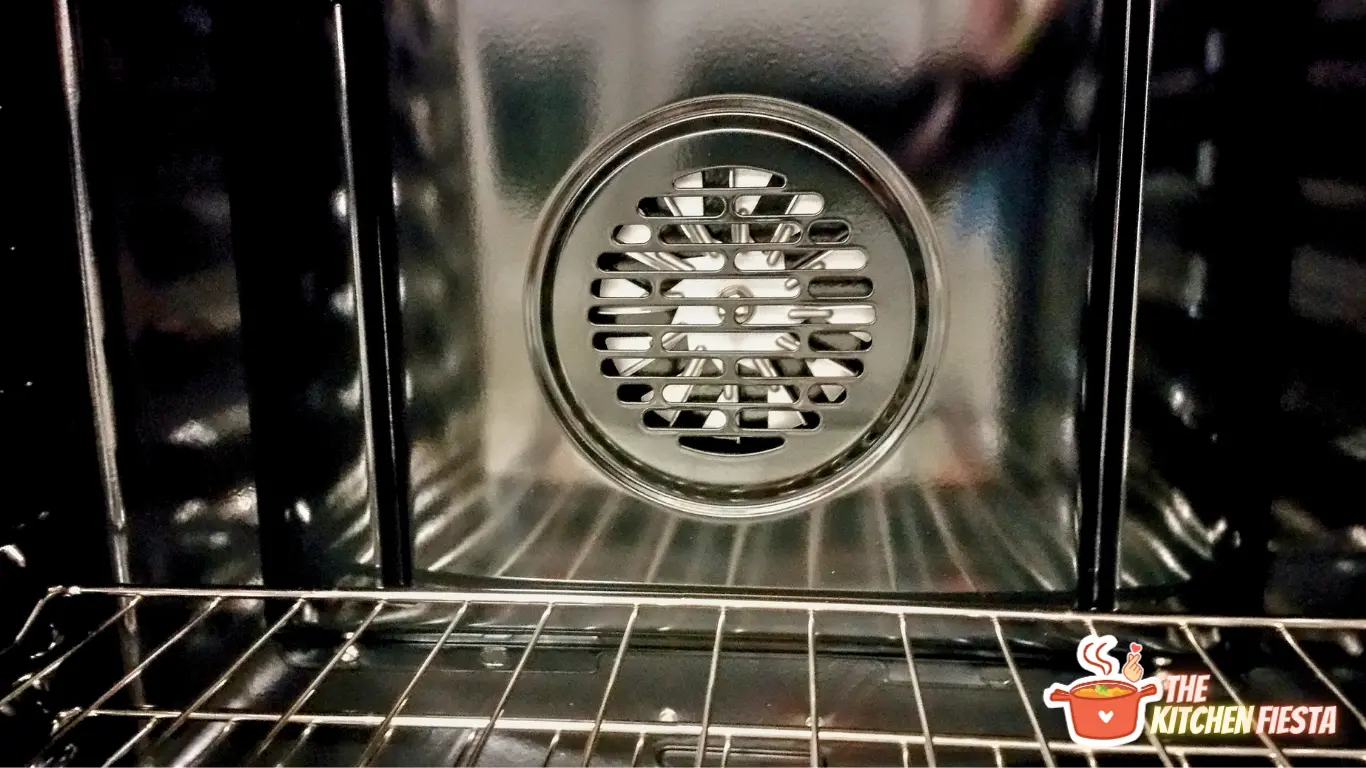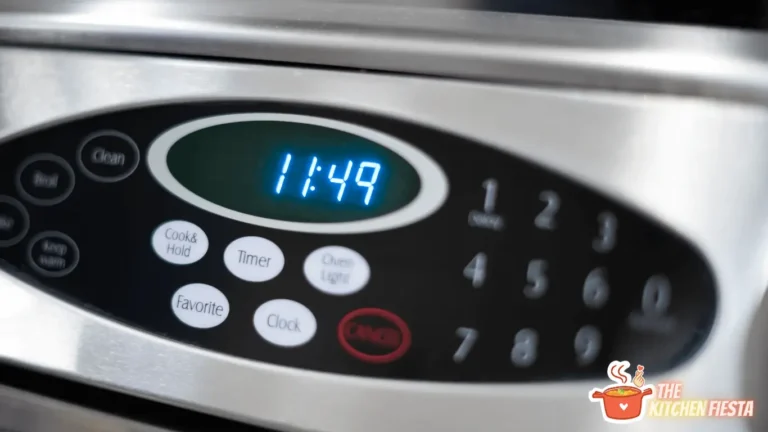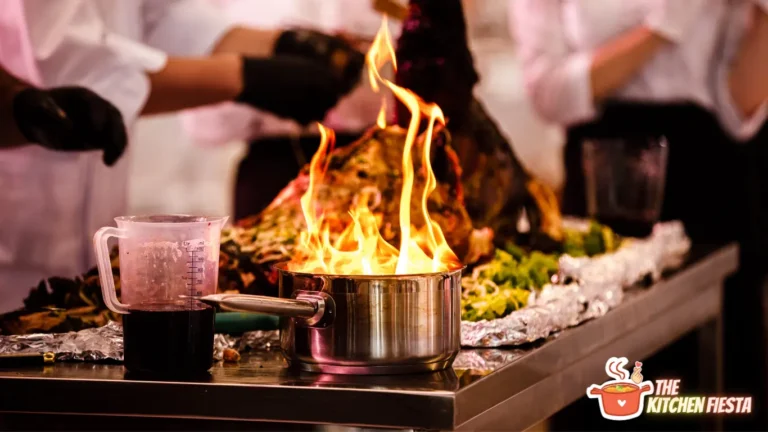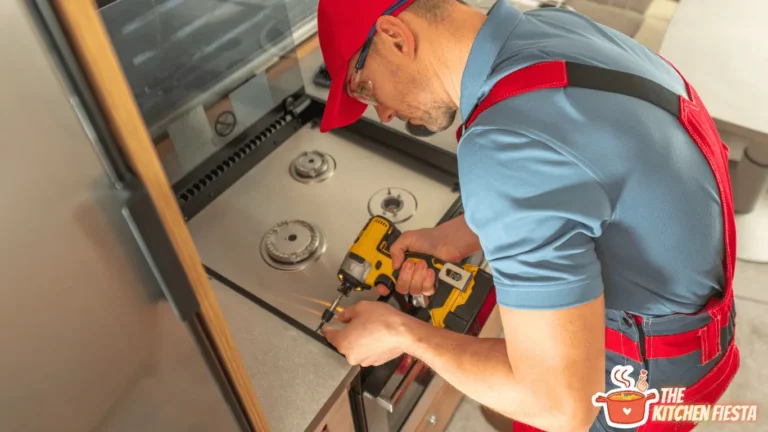How Do Stove Fans Work? A Clear Explanation

Stove fans are a popular addition to wood-burning stoves, but how do they work? Many wonder how a fan can be powered without electricity and how it can help distribute heat more evenly throughout a room. This article will explore the mechanics of stove fans and how they can benefit your home.
Stove fans use the heat generated by a wood-burning stove to power a small motor, which drives the fan blades. As the blades rotate, they force air through the front of the fan and out into the room, helping to distribute the heat more evenly. Because stove fans don’t require an electrical supply, they are an eco-friendly way to improve the efficiency of your wood-burning stove.
While stove fans may not be necessary for every home, they can be a valuable addition for those who want to maximize the heat output of their wood-burning stove. By improving the circulation of warm air throughout the room, stove fans can help reduce your heating bills and keep your home more comfortable during the colder months. In the following paragraphs, we will delve deeper into the mechanics of stove fans and explore their benefits in more detail.
Fundamentals of Stove Fan Operation
Stove fans are self-powered energy-saving appliances that use the heat generated by a wood-burning stove to power a small electric motor and fan blade. The fans use electricity to generate movement, which turns into heat. This electricity works by having one side hot and cooler air on the other side, creating a thermal difference that powers the motor, turning on the fan and creating a warmer atmosphere.
The essential operation of a stove fan is straightforward. As heat rises from the stove, it passes through the fan’s base and heats a Peltier device installed underneath the fan’s blades. The Peltier device is a thermoelectric module that converts temperature differences into electrical energy. As the temperature rises, the Peltier device generates electricity, powers the motor, and turns the fan blades.
Stove fans are designed to distribute heat more evenly throughout a room. As heat rises, a fan can create a warmer environment towards floor level and help prevent warm air from being trapped around the stove or ceiling. This makes the room more comfortable and saves energy by reducing the need to run a central heating system.
Stove fans are also environmentally friendly, as they do not require any external power source and are powered solely by the heat generated by the stove. They are simple to install and require no maintenance, making them an attractive option for those who want to reduce their energy consumption and save money on their heating bills.
Components of a Stove Fan
Stove fans are designed to circulate warm air generated by a wood stove or fireplace throughout a room. The components of a stove fan vary depending on the fan type, but some common parts are found in most models. In this section, we will discuss the three primary components of a stove fan: Motor, Blades, and Thermoelectric Module.
1. Motor
The motor is the heart of a stove fan. It is responsible for turning the blades and circulating the warm air throughout the room. The engine is usually located at the base of the fan and is powered by either heat or electricity. Heat-powered stove fans have a thermoelectric module that generates electricity from the stove’s heat. In contrast, electric stove fans are powered by an electrical source.
2. Blades
The blades of a stove fan are designed to move air effectively and efficiently. The number of edges and their shape can vary depending on the model of the stove fan. Some stove fans have two blades, while others have four or more. The blades are typically made of lightweight materials such as aluminum or plastic. They are designed to be durable and long-lasting.
3. Thermoelectric Module
Heat-powered stove fans have a thermoelectric module that converts the heat from the stove into electricity to power the motor. The module consists of two different metals joined together at one end. When one end of the module is heated, an electrical current is generated, which is used to power the motor. The thermoelectric module is usually located at the base of the fan. It is in direct contact with the hot surface of the stove.
Working Mechanism of a Stove Fan
Stove fans are an innovative way to circulate warm air in a room. They work by converting the heat generated by the stove into energy to power the fan. The working mechanism of a stove fan can be divided into two sub-sections: heat conversion and air circulation.
Heat Conversion
Stove fans are designed to convert heat energy into kinetic energy. They use a thermoelectric module (TEM) to generate electricity from the heat difference between the stove’s surface and the air around it. The TEM comprises two dissimilar metals, which are connected at two junctions. When one corner is heated, and the other is cooled, a voltage is created, which generates electricity.
The electricity generated by the TEM is used to power a small motor that drives the fan blades. The engine is connected to the blades through a series of gears, increasing the blades’ speed.
Air Circulation
Once the fan blades start spinning, they create a flow of air that circulates the room. The atmosphere is drawn in through the front of the fan and pushed out through the back. The direction of the airflow can be adjusted by tilting the fan.
Stove fans are designed to work with the natural convection of the room. As warm air rises, it creates a flow of air that circulates the room. The stove fan speeds up this process by pushing the warm air away from the stove and into the rest of the room.
Types of Stove Fans
Stove fans come in two main types: electric and non-electric. Each class is designed to work differently and has its advantages and disadvantages.
Electric Stove Fans
Electric stove fans are powered by electricity and are often more potent than non-electric fans. They can be plugged into an outlet and turned on and off with a switch. Some models also come with a thermostat that can be set to turn the fan on and off automatically.
Electric stove fans are usually more expensive than non-electric fans. Still, they are also more efficient at circulating warm air throughout a room. They are also quieter than non-electric fans, making them a good choice for those who want to use their stove fan while they sleep.
Non-Electric Stove Fans
Non-electric stove fans are powered by the heat generated by the stove itself. They do not require any electricity or batteries to operate. Instead, they use a thermoelectric module to convert the heat from the stove into electricity, which powers the fan.
Non-electric stove fans are usually less expensive than electric fans but also less powerful. They may be unable to circulate warm air throughout a large room as efficiently as an electric fan. However, they are also more eco-friendly and can be a good choice for reducing energy consumption.
Benefits of Using a Stove Fan
Stove fans have become increasingly popular as people look for ways to make their wood-burning stoves more efficient. Here are some of the benefits of using a stove fan:
- Increased efficiency: One of the primary benefits of using a stove fan is that it can increase the efficiency of your wood-burning stove. By circulating the warm air around the room, stove fans can help reduce the fuel you need to burn to keep your home warm. This can translate into significant cost savings over time.
- Better heat distribution: Another benefit of using a stove fan is that it can help distribute heat evenly throughout your home. Instead of having hot spots near the stove and cooler areas further away, the fan can help circulate the warm air to all room parts. This can create a more comfortable living environment, especially in larger spaces.
- Reduced environmental impact: Using a stove fan can also help reduce your wood-burning stove’s ecological impact. By increasing the efficiency of your stove, you can reduce the amount of wood you need to burn, reducing the amount of CO2 emissions released into the atmosphere. This can be an important consideration for people concerned about their carbon footprint.
- Easy to use: Stove fans are also very easy to use. Most models sit on your wood-burning stove and start working automatically when the stove heats up. There are no complicated controls or settings to worry about, and maintenance is usually minimal.
- Quiet operation: Finally, stove fans are generally calm during the process. Unlike some other types of fans, they do not produce a lot of noise or vibration, which can be important for people sensitive to these types of disturbances.
Using a stove fan can greatly increase your wood-burning stove’s efficiency and comfort while reducing environmental impact. With many models available, finding a stove fan that meets your needs and budget is easy.
Maintenance of a Stove Fan
Stove fans are an excellent addition to any wood-burning stove, providing a more efficient and even heat distribution throughout the room. However, like any other appliance, stove fans require regular maintenance to ensure optimal performance and longevity. Here are a few tips on how to maintain your stove fan:
1. Keep it Clean
Dust and debris can accumulate on the blades and motor of the stove fan, reducing its efficiency and performance. To prevent this, it is essential to clean the fan regularly. Use a soft cloth or brush to wipe the blades and motor, removing dust, debris, or cobwebs. Avoid using water or any liquid cleaner, as it can damage the engine.
2. Lubricate the Motor
Lubricating the motor of the stove fan is crucial to keep it running smoothly and quietly. Use a few drops of lightweight oil, such as sewing machine oil, to lubricate the motor’s bearings. Avoid using heavy oils or grease, as they can damage the engine.
3. Check the Temperature
Stove fans are designed to operate within a specific temperature range. To prevent overheating and damage to the motor, it is crucial to monitor the stove’s temperature regularly. Use a stove thermometer to check the temperature, and if it exceeds the recommended range, turn off the stove fan.
4. Check the Blades
The blades of the stove fan can become loose or misaligned over time, reducing its efficiency and performance. To check the blades, turn off the stove fan and gently spin the blades. If they wobble or make a rubbing noise, it may be necessary to realign or tighten them.
5. Store it Properly
When not in use, store the stove fan in a dry and cool place, away from direct sunlight or heat sources. Avoid storing it in a damp or humid environment, as it can damage the motor or blades.
Potential Issues and Troubleshooting
Stove fans are generally reliable and low-maintenance devices. However, as with any mechanical device, they can experience issues that require troubleshooting. Here are some potential problems and troubleshooting tips to help you keep your stove fan running smoothly:
Fan Not Working
If your stove fan is not working, there could be several reasons. Common issues include a faulty fan motor, clogged air filters, or a defective heat sensor. To determine the source of the problem, it is important to inspect the fan motor and filters, as well as check for any loose or faulty wiring. If the motor is defective, it will need to be replaced. If the filters are clogged, they can be cleaned or replaced. If the heat sensor is bad, it will need to be replaced.
Fan Not Spinning Fast Enough
If your stove fan is spinning slowly or not spinning at all, it could be due to a lack of heat. Stove fans are designed to turn faster as the stove gets hotter. If the stove is not hot enough, the fan will not spin fast enough to circulate the air effectively. To troubleshoot this issue, check the stove temperature with a stove thermometer. If the stove is not reaching the required temperature, it may be due to a lack of fuel or a problem with the stove itself.
Fan Making Strange Noises
If your stove fan makes strange noises, it could be due to a loose or damaged blade or motor. To troubleshoot this issue, turn off the stove fan and inspect the blades and engine for any signs of damage or wear. If the blades are loose, they can be tightened. If the motor is damaged, it will need to be replaced.
Fan Overheating
If your stove fan is overheating, it could be due to a lack of ventilation or a problem with the heat sensor. To troubleshoot this issue, check the stove fan’s ventilation to ensure it is not blocked or obstructed. Check the heat sensor to ensure it functions properly if the ventilation is clear. If the heat sensor is defective, it will need to be replaced.
Conclusion
Stove fans are a useful addition to any home with a wood-burning or gas stove. They work by drawing in air from around the room and pushing it out through the top of the fan, creating a gentle breeze that helps to spread warm air throughout your home.
The main benefit of using a stove fan is that it can help maximize the heat from your stove. This means you can get more heat from your stove without using more fuel. Additionally, stove fans can help to circulate warm air throughout your home, which can help to reduce your heating bills.
A few different types of stove fans are available, including heat-powered fans, electric fans, and battery-powered fans. Heat-powered fans are the most popular type of stove fan, as they don’t require any external power source. Instead, they use your stove’s heat to power a small motor, which drives the fan blades.
When choosing a stove fan, it’s important to consider the size of your stove, as well as the size of your room. A larger stove will require a larger fan to circulate the warm air effectively. Additionally, it would be best if you considered the noise level of the fan, as well as its energy efficiency and ease of use.
Stove fans are a great investment for anyone looking to get more heat from their wood-burning or gas stove. They are easy to use, energy-efficient, and can help to reduce your heating bills.
Related FAQs
How do stove fans work?
Stove fans conduct heat from the stove’s surface, which travels from the aluminum base. The device within the stove fan produces electricity by keeping one side of the fan hot and the other much cooler (referred to as a ‘thermal difference’).
Do stove fans need batteries?
No, stove fans do not require batteries or any other external power source. They are powered solely by the heat generated by the stove.
Can stove fans be used with gas stoves?
Stove fans are designed to work with wood-burning stoves, as they require a high-temperature differential to generate electricity. Gas stoves do not produce enough heat to power a stove fan.
How many blades do stove fans have?
Stove fans can have two to four blades, with most models having three. The number of blades does not affect the performance of the stove fan as long as the blades are properly balanced.
How far away from the stove should a stove fan be placed?
Stove fans should be placed as close to the stove as possible, ideally within 4-6 inches. This will ensure the fan is exposed to the maximum heat and can operate at its full potential.





